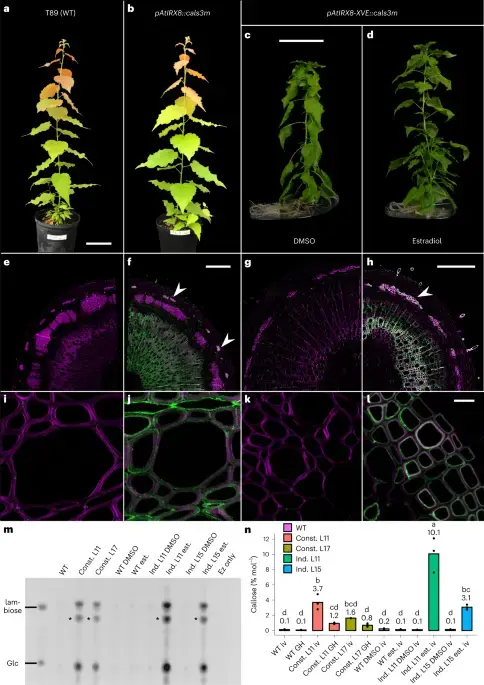Plant biomass plays an increasingly important role in the circular bioeconomy, replacing non-renewable fossil resources. Genetic engineering of this lignocellulosic biomass could benefit biorefinery transformation chains by lowering economic and technological barriers to industrial processing. However, previous efforts have mostly targeted the major constituents of woody biomass: cellulose, hemicellulose and lignin. Here we report the engineering of wood structure through the introduction of callose, a polysaccharide novel to most secondary cell walls. Our multiscale analysis of genetically engineered poplar trees shows that callose deposition modulates cell wall porosity, water and lignin contents and increases the lignin–cellulose distance, ultimately resulting in substantially decreased biomass recalcitrance. We provide a model of the wood cell wall nano-architecture engineered to accommodate the hydrated callose inclusions.
In other words, it’s easier to make biofuels from.


